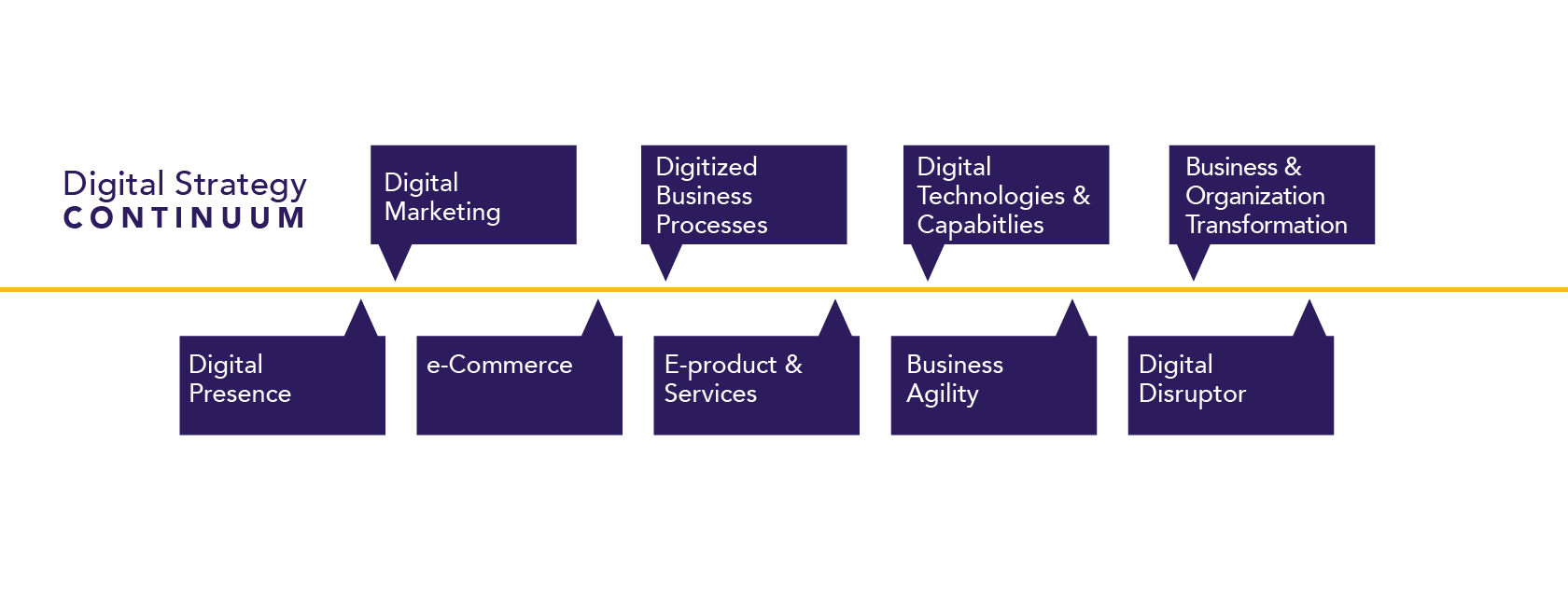In business, marketing and technology circles, digital strategy is a crucial element for success.
Part one of a series
Digital is not a fad. Determining – or reworking – your digital strategy isn’t an option anymore; it’s a critical factor to helping your business grow – and succeed – in today’s complex digital world. Two factors that make digital different and likely more urgent from previous technology era trends:
- The pace at which technology applications can be changed, update or improved.
- The opportunity that the interconnected digital ecosystem provides to do things between organizations, people and apps.
Defining a Digital Strategy
Every company or consultant you talk to today has a different definition of what digital is, and what constitutes a digital strategy. Regardless of how they’re defined, every organization’s digital strategy is unique, a mix of business strategy and information technology strategy. As we talk to our clients about their digital strategies, we often start by using the digital strategy continuum below to first determine where their organization’s digital maturity is on today and where they aspire to be.
There are many variations of the strategic planning process, but there are 10 key components that should be considered when developing a comprehensive digital strategy.
Some will be more important to you, based on your current digital maturity and the digital aspirations of your organization. In some cases, it’s a matter of timing and sequencing or relative prioritization.
In the coming weeks, we’ll examine these components and key considerations of each.
Whether you call your effort a digital strategy, digital marketing strategy or information technology strategic plan, we hope you find these blog posts helpful. Collectively the post series can be used as a sort of Digital Strategy checklist. We encourage you to post and share your comments and additions to what you find important and helpful in creating your digital strategy.
Aligning Your Digital Strategy With Your Business Strategy: Do I Really Need To Start Here?
Too often we see clients diving into Digital without this alignment. In the rapidly changing digital world that we all now live in, business and digital strategies must be aligned and informed by each other.
In the most mature organizations that have adjusted their products/services, business processes and customer experiences to be fully digital, there isn’t a distinction between the two. Digital is how they do things. Each person in the organization understands customer expectations. They use digital tools and data to service customers as well as provides feedback in order to continuously improve or innovate. The organization’s digital strategy becomes indistinct from information technology strategy and overall business strategy.
Most organizations are still evolving or maturing from a digital perspective. We suggest starting with the organization’s vision, business objectives/goals and priorities and identifying how digital can support these. This can help focus the strategy to those areas that matter most. For example, if the organization is focused on growth through better distributor relationships and more repeat business—focus your digital efforts on processes, app’s and data that will drive this.
Often IT or Marketing leaders will need to bring the digital opportunities to the broader business strategy conversation and ensure the right strategies and initiatives become part of the broader strategy. This clear alignment makes the Digital agenda relevant and helps pave the way for broader support and funding of digital initiatives.
Selecting digital priorities that don’t truly help deliver on the business goals or objectives or set the stage for these possibilities can be a frustrating endeavor. Conflicting objectives and battle for organizational resources and mindshare often doom these digital strategies.
In organizations where you don’t have the alignment or guidance of an enterprise digital strategy, offer opportunities where digital can enhance the broader business strategy (e.g., new digital channels to exploit). This informing of the broader business strategy helps the organization move toward alignment and can demonstrate your digital leadership.
In sum: You improve the chances of real impact of your digital strategy when you have a business strategy and digital strategy alignment. If it’s not coming from the top-down, seek out ways to influence and align where you can.


